Scientific Illustrations II
Illustrations and visualisations from the last few of years for scientific publications and research institutions.
Limited edition prints available at mrkism.com/shop - All scientific illustrations are printed on eco-friendly museum-quality Hahnemühle Bamboo paper and come with a certificate of authenticity. Prints are produced and shipped via creativehub.io who are end-to-end carbon neutral and partner with the World Land Trust to protect natural habitats.
More on Instagram: @mrk.ism
Hemaware Magazine
Illustrations created between 2018-2020 for Hemaware magazine which is produced by the National Hemophilia Foundation with the aim to raise awareness on bleeding disorders, new treatments and research.

Endocytosis - Gene therapies for haemophilia use viruses to deliver genes to human cells. In this illustration the Adeno-associated Viruses carrying modified genes enter cells through the process of endocytosis whereby the cell membrane envelops them to let them in the cytoplasm and eventually to the cell nucleus where the modified genes can replace defective genes in the DNA.
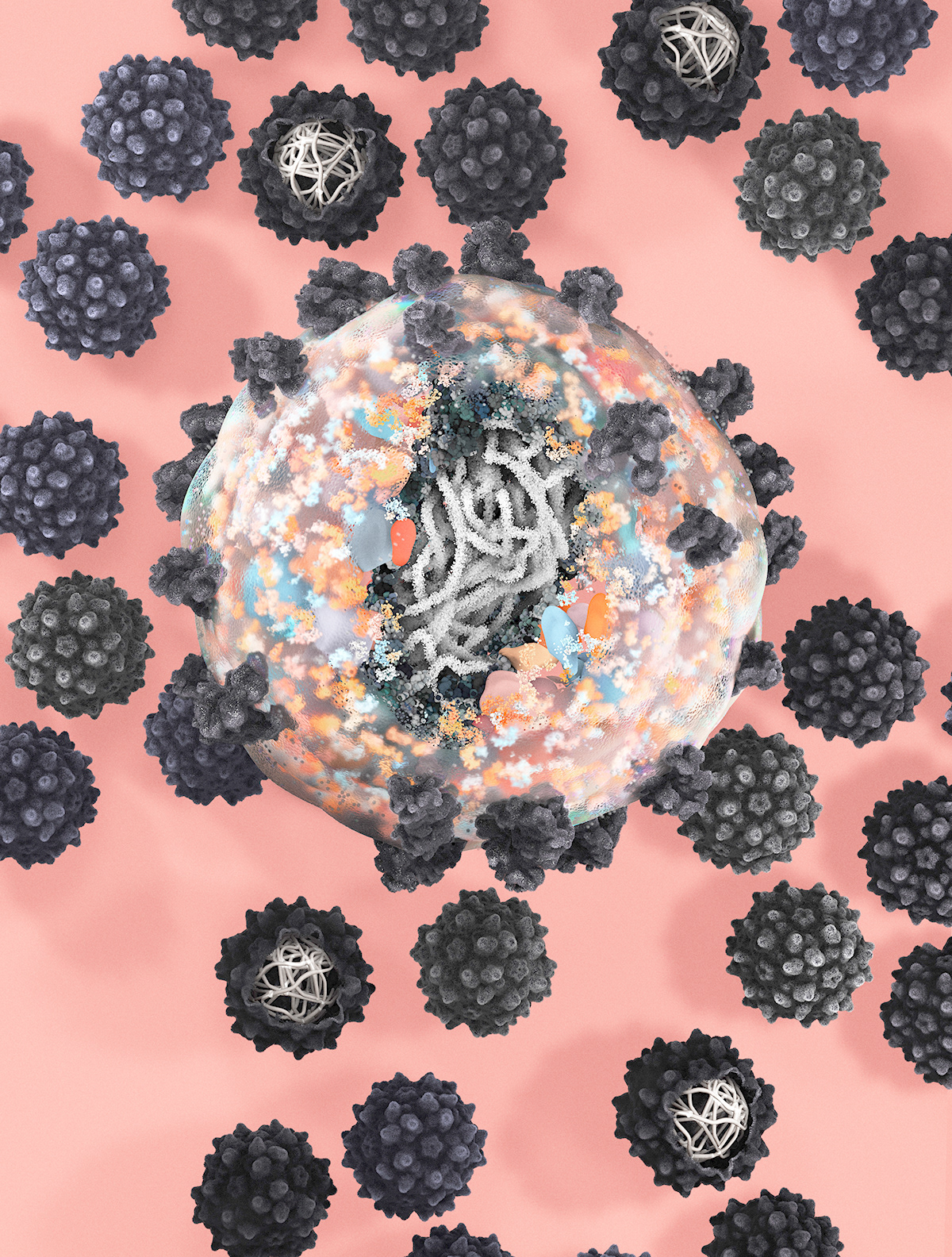
Anatomy of a Virus - New gene therapies use larger viruses such as lentiviruses shown here in the middle instead of the typical AAV viruses depicted here dispersed around the lentivirus to show the vast difference in scale. The larger viruses allow for more genetic material to be transported to human cells. The illustration also shows the structural differences between the two types of virus, with the larger lentivirus being far more complex constructed with various layers of proteins whereas the AAV virus is much simpler in comparison.
Anatomy of a Virus - the intricate parts of a Lentivirus shown layer by layer
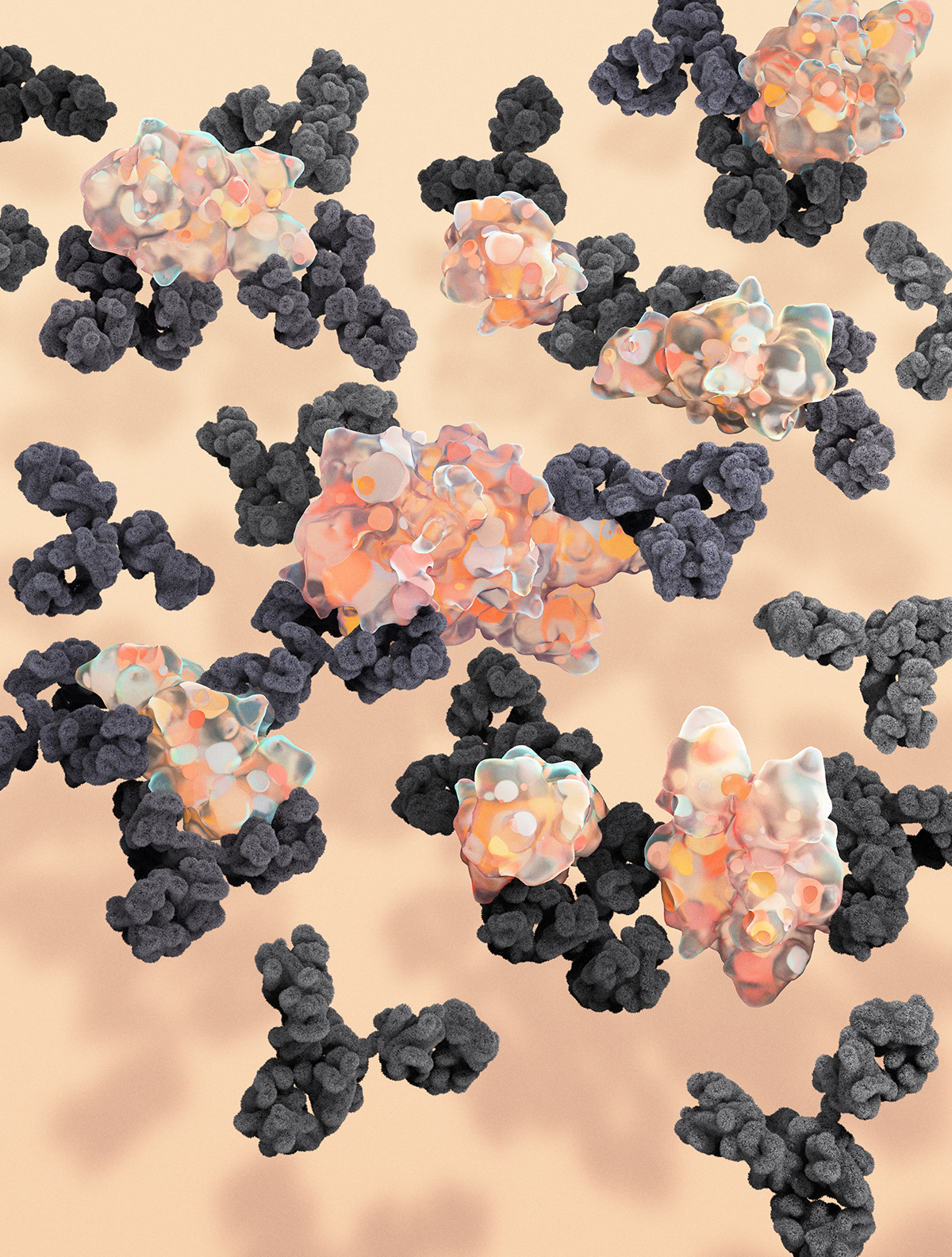
Antibodies vs. Proteins - In some cases the antibodies in the human body attack the proteins created by gene therapy that are necessary for blood clotting. Shown here in black, antibodies circle around the proteins blocking them from attaching to cells. New drugs are now in production to mimic the effect of these proteins without the antibodies recognising them as a threat.
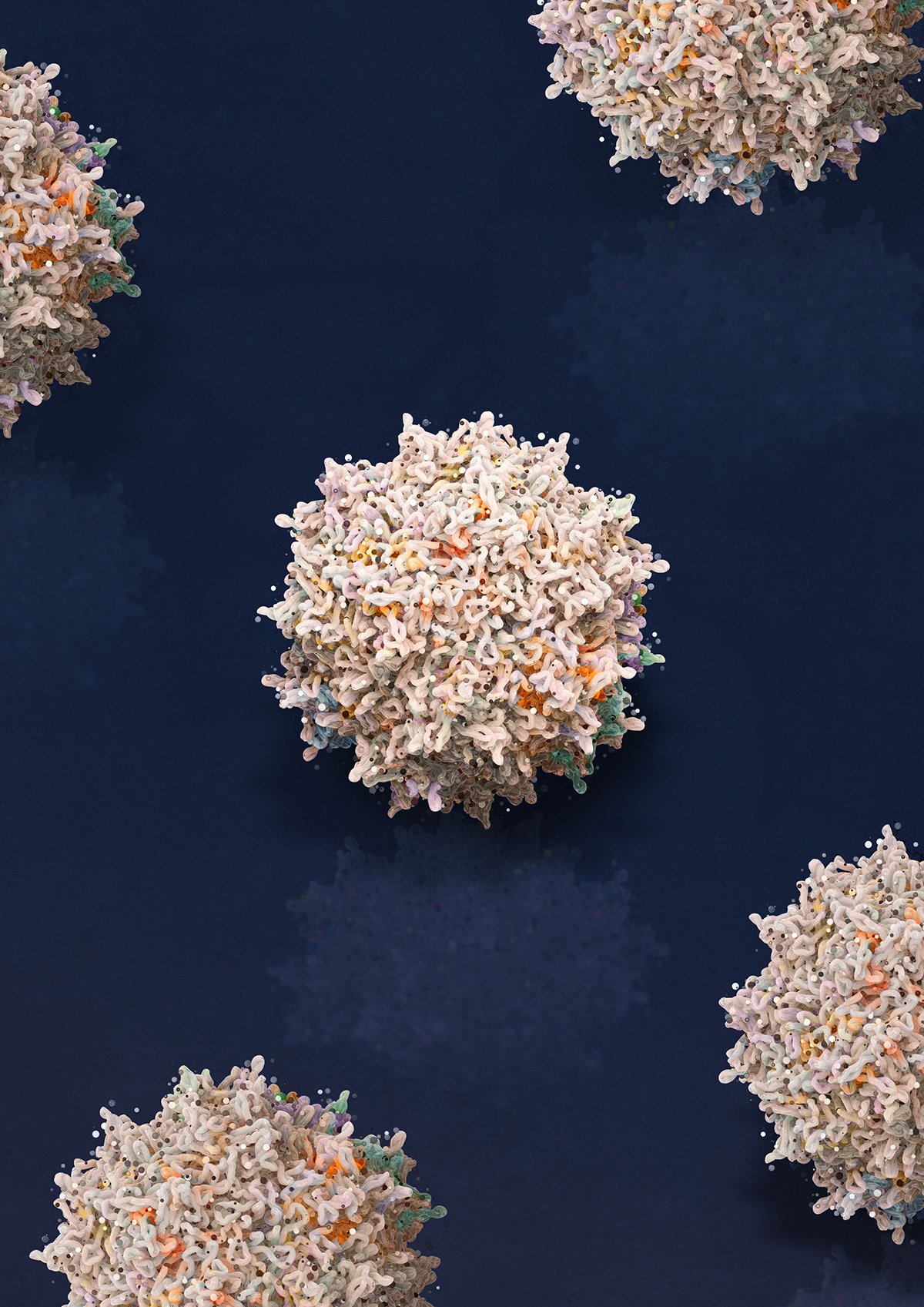
Adeno-associated virus - The illustration shows the intricate molecular structure of these viruses used for gene therapies.

Molecular structure of Factor IX - one of the naturally produced proteins in the body responsible for blood-clotting that is not produced in sufficient amounts in people with haemophilia

Molecular structure of Factor VIII - is another essential blood-clotting protein which is encoded by a gene that is defective in Haemophilia A.

Gene Splicing - artistic impression - the defective gene of the DNA in people with haemophilia is shown here in brown.
mTOR Protein Complex
Illustration for Science Magazine and MIT
The scientists from the Sabatini Lab at the MIT have determined a cryo-electron microscopy structure of a massive protein complex called mTOR. The structure of this protein complex was captured in a state after landing on a recycling compartment of a cell called the lysosome.
The reason why this work is exciting is because mTOR is a major controller of human growth. Depending on food availability and whether your pituitary sends growth hormones to your body, mTOR can figure out what is the best strategy of dealing with it -- to grow in times of plenty, or to stand by and recycle what's available in times of hunger. The recycling part happens in lysosomes, which are basically membrane-bound bags of ready-made food. mTOR controls the release of this food to the rest of the cell, so that it can fuel its growth. Deregulated mTOR can cause accelerated and uncontrolled growth, i.e. cancer. The long term aim is to make drugs that can modulate hyperactivated mTOR in cancer cells, and therefore stop its growth.
The illustration shows the mTOR complex (middle left) landing on the surface of the a lysosome and attaching to its membrane via flexible disordered protein tails called Rheb and Rag-Regulator. In the foreground there is another protein complex related to MTOR , which acts as it's activator, and is a promising drug target for cancer. This new protein, whose structure was also recently determined at the Sabatini Lab, is called called FLCN-FNIP2.
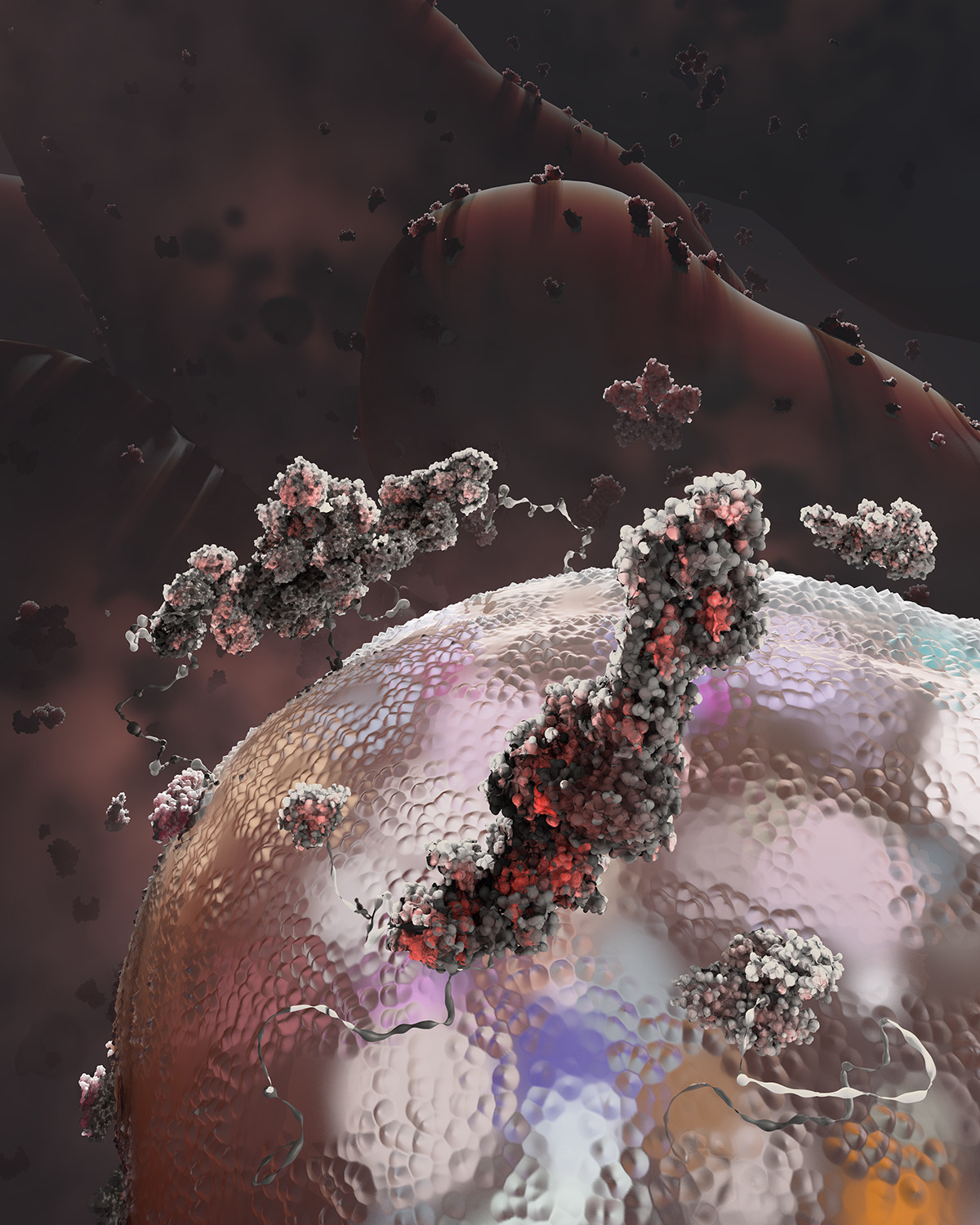
Quiroz Lab
Illustration for the launch of Quiroz Lab at Georgia Tech - Biomedical engineering. The illustration depicts various states of protein order and disorder (idps, oligomers, collagen helixes, peptide assemblies) to show the wide range of research conducted at the Lab that includes self-assembling materials, protein engineering tools and DNA sequencing with implications on nanotechnology, biotechnology and medicine.
"This illustration depicts our efforts to engineer and dissect the self-assembly of genetically-encoded materials. In nature, these complex materials are often built from simple, repetitive and disordered building blocks. Here, intrinsically-disordered proteins, at the bottom, assemble over space and time to yield highly-ordered nanostructures on the surface." Dr. Felipe Quiroz
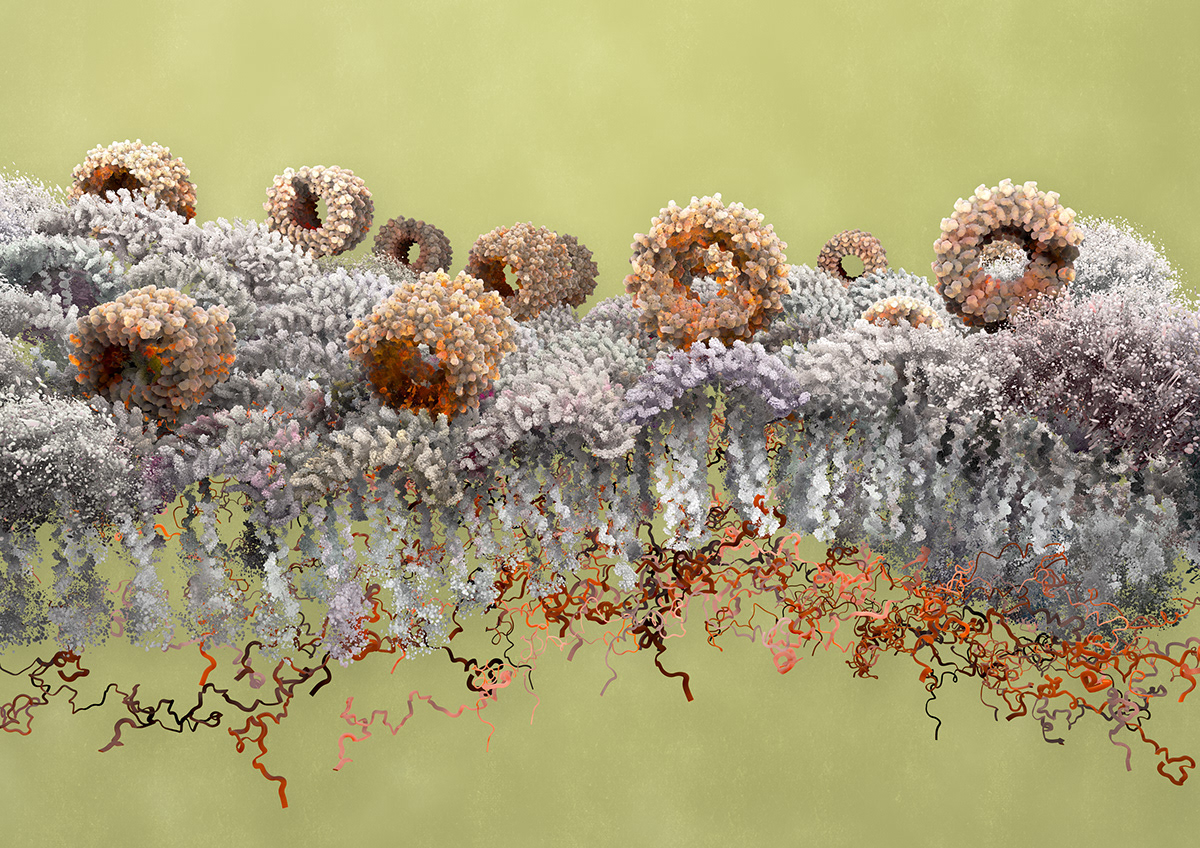
Polymers
Virtual Cultures
Self-initiated illustration depicting virtual bacterial cultures growing in a Petri dish. This is part of an ongoing series on the human microbiome.
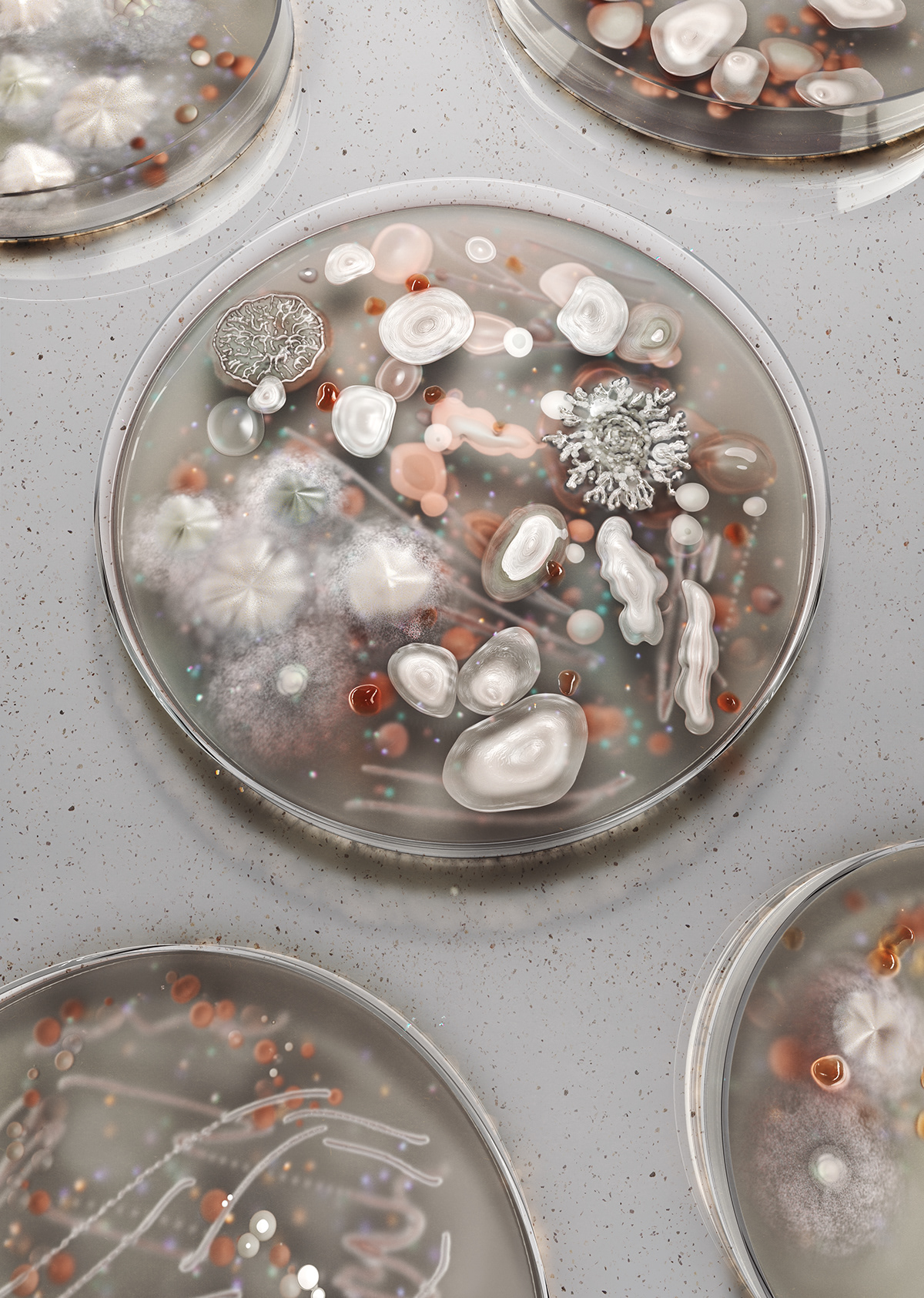
Virtual Cultures




